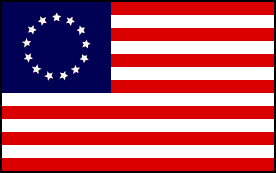Friday, October 30, 2009
Wednesday, October 07, 2009
You Reap What You Sow

A *Breitbart.com / Associated Press news article* reports that politicians involved in sex scandals that have been the butt of many of David Letterman’s jokes, have actually been pretty sympathetic towards Letterman in light of his own scandal.
The story titled “LETTERMAN THREW SPITBALLS FROM HIS OWN GLASS HOUSE” quotes former Florida Rep. Mark Foley; "I feel sorry for Dave—I take no glee."
South Carolina Gov. Mark Sanford said; "Both my thoughts and my prayers are with him," Sanford went on to say; "There's a lot more introspection and soul-searching on the way down than there is on the way up. He can be a better person for it."
Of course it wasn’t right what Foley, Sanford, and Eliot Spitzer, former governor of New York, who was involved in an investigation into a prostitution operation, did.
And yes, they set themselves up for ridicule, and no, I don’t have any sympathy for them. But at least they fessed up to what they have done, and admitted it was wrong. Letterman is still trying to make himself out to be a victim even though it’s his own debauchery he has to account for.
But letterman is now and has always been a hypocritical jackass; and I have never found his “jokes” funny.
* http://www.breitbart.com/article.php?id=D9B6CJ782&show_article=1
Tuesday, October 06, 2009
Origins Of Halloween

http://rmfc.org/FactSheets/OriginsofHalloween.html
For a proper understanding of the modern American celebration on October 31st, we must look at three early celebrations that have come together to form today's Halloween.
The first of these precursors to Halloween goes all the way back to pre-Christian Ireland and Scotland to a celebration of the Druids or Celtic priests. The Celtic year began on November 1st with the festival of Samhain. On the eve of Samhain, October 31st, laughing bands of young people disguised in grotesque masks carved lanterns from turnips and carried them through the villages. It was sort of a harvest festival, and in addition, it was thought of as a festival of the dead. The druids believed it was on that night when the earth comes into closest contact with the spiritual world; and consequently ghosts, goblins and witches supposedly destroyed crops, killed farm animals and wreaked havoc on the villagers. As these spirits of the dead roamed around, villagers lighted bonfires to either drive them away or to guide the spirits of the dead back to their homes.
The second precursor to Halloween goes back to the Dark Ages in central Europe. There, the Christian church destroyed many of the temples of various pagan gods and goddesses, such as Diana and Apollo. However, this pagan worship was never completely eradicated and took on the form of witchcraft. One of the most important aspects of witchcraft is a number of celebrations each year which are called "Witches' Sabbaths." One of the highest of the Witches' Sabbaths is the High Sabbath or the Black Sabbath of Witches on October 31st. Much of the Halloween folklore of today such as black cats, broomsticks, cauldrons and spells come from the Black Sabbath.
The third precursor to Halloween goes back to the early Roman Catholic Church. The church had appointed certain days to honor each saint and basically ran out of days in the year for all their saints to have a day, so they decided to have one day to remember all the saints. They called it All Saints' Day. In the eighth century, Pope Gregory the third changed All Saints' Day from May 13th to November 1st, and in the year 834 Pope Gregory the fourth extended this celebration to the entire Roman church. This event was called Allhallowmass, and as you might suppose, there was a celebration on the evening before on October 31st, called All Hallow E'en, "all hallow" meaning all of the hallowed ones. As you might guess, the contraction of hallow and e'en is where the word Halloween is derived.
The modern custom of going door to door begging for candy while dressed in costumes called "trick or treating," goes back to the pagan new year's feast in Ireland. The spirits that were thought to throng about the houses of the living were greeted with a banquet. At the end of the feast, villagers disguised as souls of the dead, paraded to the outskirts of the village leading the spirits away. This was done to avoid any calamities the dead might bring. Another way the villagers tried to appease the dead was to set out bowls of fruit and other treats so the spirits would partake of them and leave them in peace. Later when the belief in ghosts and goblins declined, youths dressed up as ghosts and goblins and threatened to play tricks on those who failed to be generous with treats.
The jack-o-lantern, also known as will-o-the-wisp, fox fire and corpse candle, among other things, was believed to be a wandering soul which could not find refuge in either heaven or hell because of a particularly evil deed committed in its lifetime. The Finns believed that it was the soul of a child buried in the forest. A corpse candle is said to be a small flame moving through the air in the dark and is believed by the superstitious to be an omen of the observers imminent death.
According to ancient folklore from many places, a will-o-the-wisp wanders about swamp areas, enticing victims to follow. These strange fires were also known as "foolish fire," because only a fool would follow them. Today's pumpkin face is symbolic of that mocking spirit. It is always wise to look into any customs associated with holidays and be aware of their roots.
Rocky Mountain Family Council -- 8704 Yates Drive, Suite 205, Westminster, CO 80031 -- (303) 292-1800
This resource may be reprinted without change and in its entirely for non-commercial purposes without prior permission from the Rocky Mountain Family Council.




